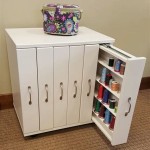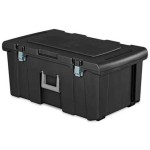Essential Considerations for Choosing the Largest Storage Unit Size
Determining the appropriate storage unit size can be a daunting task, especially when dealing with the largest options. Understanding your storage needs and the features offered by different sizes is crucial for making an informed decision. This article explores the essential aspects to consider when selecting the largest storage unit size to ensure it meets your specific requirements and provides optimal storage solutions.
1. Inventory and Volume Estimation
Thoroughly assess your belongings before considering any unit size. Create an inventory list and categorize items based on their size, weight, and fragility. Estimate the volume of your possessions using online calculators or by physically measuring large items. This accurate assessment will help determine the minimum storage space required.
2. Accessibility and Maneuverability
Consider the frequency of access to your stored items. If you plan to access them frequently, opt for a unit with convenient access and ample maneuvering space. Ensure the unit has a clear entrance and sufficient aisle width to accommodate loading and unloading. This aspect is especially important for large and bulky items.
3. Unit Features and Amenities
Inquire about the features and amenities offered by different storage facilities. Some facilities provide climate-controlled units to protect temperature-sensitive items, while others offer drive-up access for easy loading and unloading. Assess your storage needs and select a unit that provides the necessary features to ensure the safety and accessibility of your belongings.
4. Location and Security
The location of the storage facility may also influence your decision. Consider factors such as proximity to your residence or business, traffic congestion, and operating hours. Additionally, ensure the facility has robust security measures in place, such as CCTV surveillance, access control systems, and perimeter fencing. This aspect is crucial to safeguard your belongings.
5. Insurance and Liability
Inquire about insurance options provided by the storage facility. Determine if the basic coverage is sufficient or if additional coverage is required. Understand the terms and conditions of the insurance policy to avoid any potential liability issues. It's essential to protect your belongings against unforeseen circumstances.
6. Long-Term Storage and Expansion
Consider your long-term storage plans. If you anticipate storing your belongings for an extended period, select a unit that meets your current and future needs. Allow for some additional space to accommodate any potential expansion in your storage requirements. Upgrading to a larger unit later can be inconvenient and costly.
7. Cost Considerations
Evaluate the cost of renting different storage unit sizes. Consider factors such as unit size, location, features, and insurance options. Compare pricing from multiple facilities to find the most cost-effective solution that meets your needs. It's important to strike a balance between affordability and the appropriate unit size.
Conclusion
Selecting the largest storage unit size requires careful consideration of your storage needs and the features offered by different facilities. By following these essential aspects, you can make an informed decision that ensures your belongings are stored securely, conveniently, and cost-effectively. Remember to assess your inventory, prioritize accessibility, consider unit features, evaluate location and security, address insurance and liability, anticipate future needs, and compare costs to find the optimal storage solution.

What Is A Yottabyte Yb And How Big It

5x10 Storage Unit Size Guide What Fits In A

Storage Tips Organization Ideas

5x15 Storage Unit Size Guide What Fits In A

Understanding Our Unit Sizes Hogleaze News

Extra Space Storage Self Unit Size Guide
Byte Samsung Semiconductor Global

Size Guide It Now

Self Storage At 536 Stone Road Lexington Ky 40503 Space Center

Tb Vs Gb Is A Terabyte Bigger Than Gigabyte Techtarget
Related Posts








